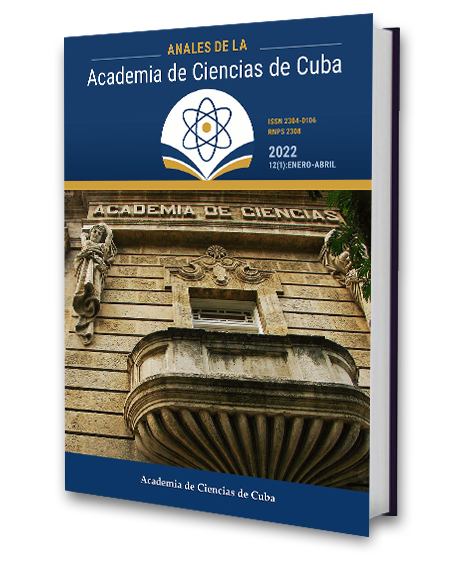Bases and benefits of the joint management of Canavalia ensiformis and mycorrhizal inoculants in agricultural production
Keywords:
sistemas integrados de nutrición, abonos verdes, hongos micorrízicos arbusculares, fertilizantesAbstract
Introduction. The supply of nutrients is a decisive component of agroecosystems, but in Cuba only 25 % of cultivated areas are fertilized, negatively influencing their productivity. Based on the benefits of mycorrhizal inoculants and green manures, their integration was evaluated with the objectives of establishing more efficient nutrient supply schemes, which guarantee high yields with lower amounts of fertilizers and a way for the effective mycorrhization of crops. Methods. The response of Canavalia to the inoculation of three AMF strains in eight edaphic conditions was evaluated, as well as eleven integration experiments of the green manures inoculated as precedents and or intercropped in the nutrient supply schemes of cassava, banana, tobacco, corn, tomato, coffee and king-grass. Furthermore, AMF and rhizobia co-inoculation was studied. Results. The Canavalia responded positively to mycorrhizal inoculation, with average increases in biomass, NPK contents and mycorrhizal propagules between 50 % and 300 %. The effectiveness of the strains depended on the pH of the soil. The Canavalia inoculated and used as a precedent or intercropped was successfully integrated into the fertilization schemes of the crops, guaranteeing high yields, effective mycorrhizal functioning and reducing fertilizer requirements between 25 and 75 %. Co-inoculation increased the potentiality of the Canavalia. Conclusions. The inoculated Canavalia was a satisfactory way for the effective management of the mycorrhizal symbiosis, forming more efficient agricultural production technologies and with lower amounts of inputs.Downloads
Published
How to Cite
Issue
Section
License
The journal Anales de la Academia de Ciencias de Cuba protects copyright, and operates with a Creative Commons License 4.0 (Creative Commons Attribution-NonCommercial License 4.0). By publishing in it, authors allow themselves to copy, reproduce, distribute, publicly communicate their work and generate derivative works, as long as the original author is cited and acknowledged. They do not allow, however, the use of the original work for commercial or lucrative purposes.
The authors authorize the publication of their writings, retaining the authorship rights, and assigning and transferring to the magazine all the rights protected by the intellectual property laws that govern in Cuba, which imply editing to disseminate the work.
Authors may establish additional agreements for the non-exclusive distribution of the version of the work published in the journal (for example, placing it in an institutional repository or publishing it in a book), with recognition of having been first published in this journal.
To learn more, see https://creativecommons.org






